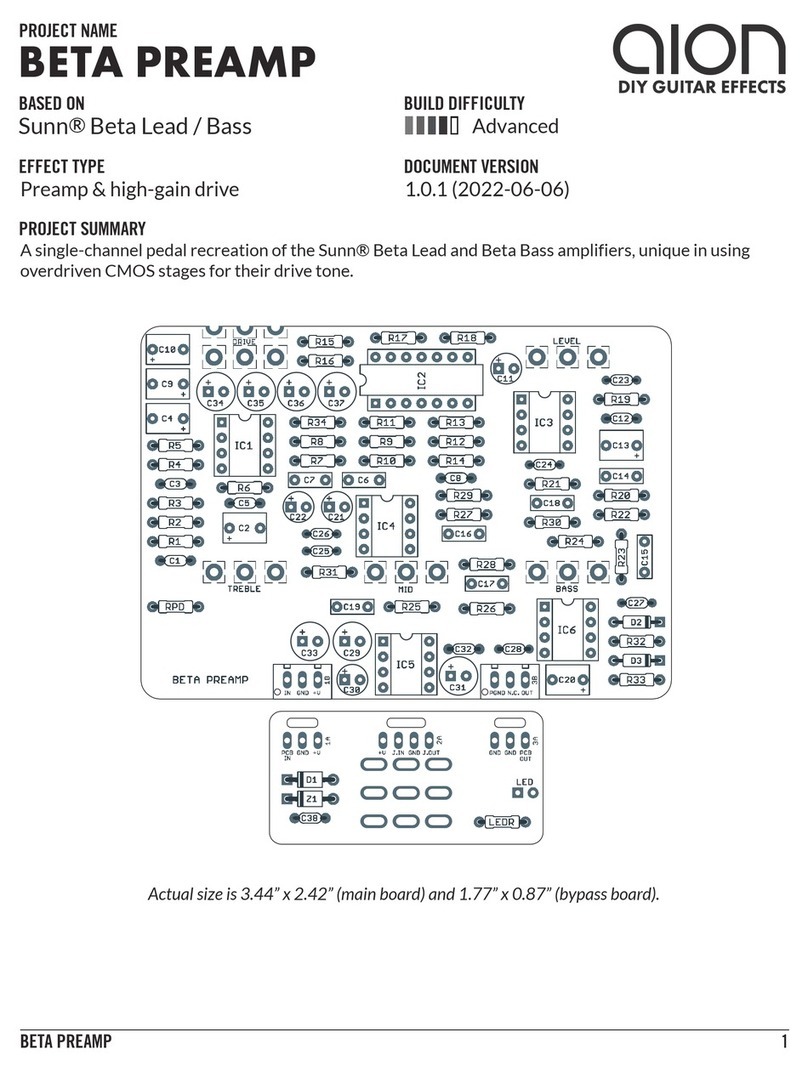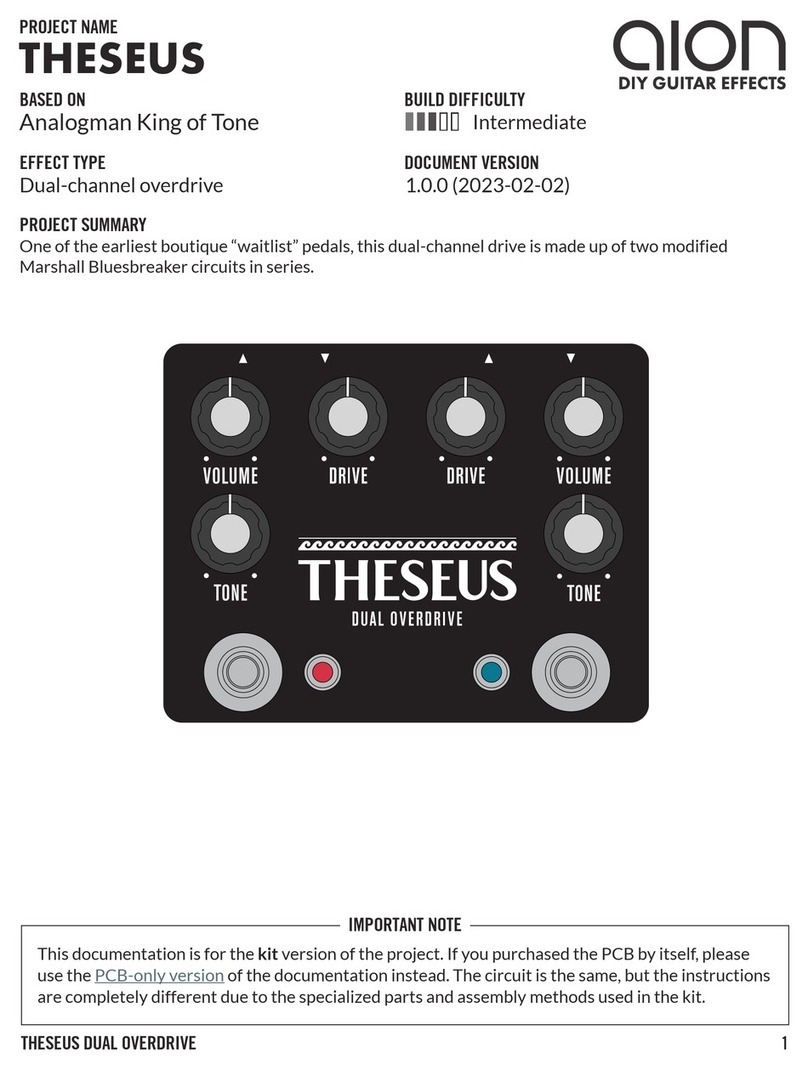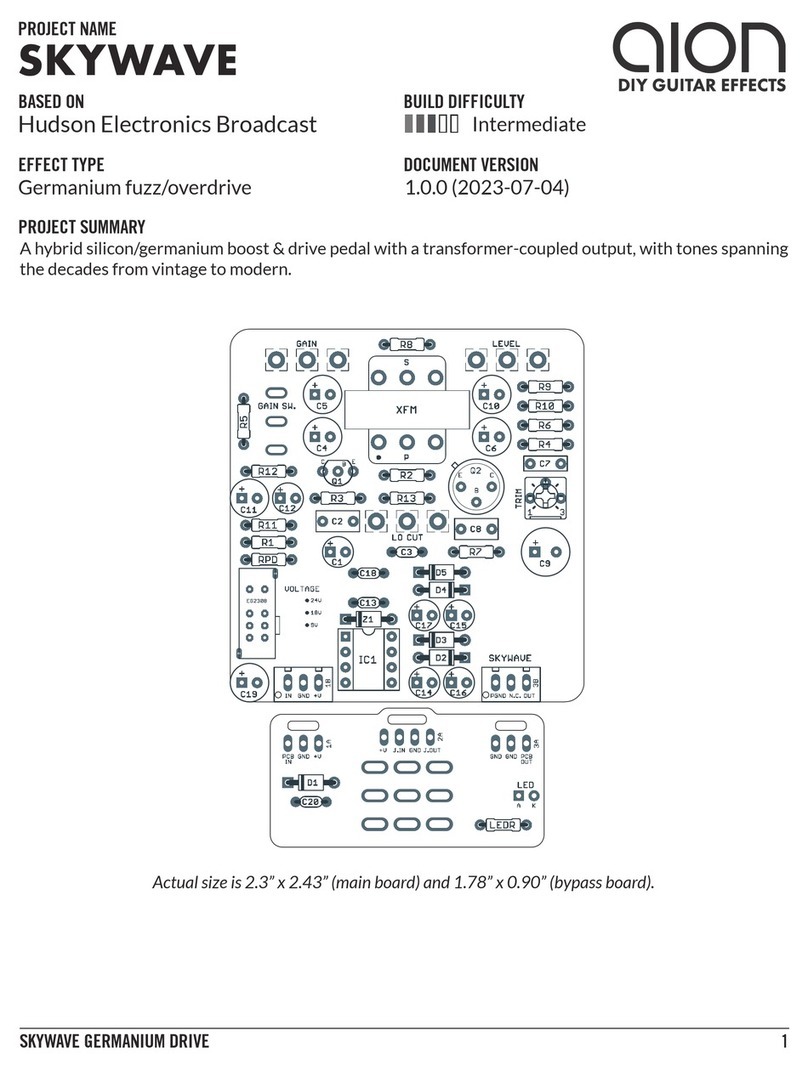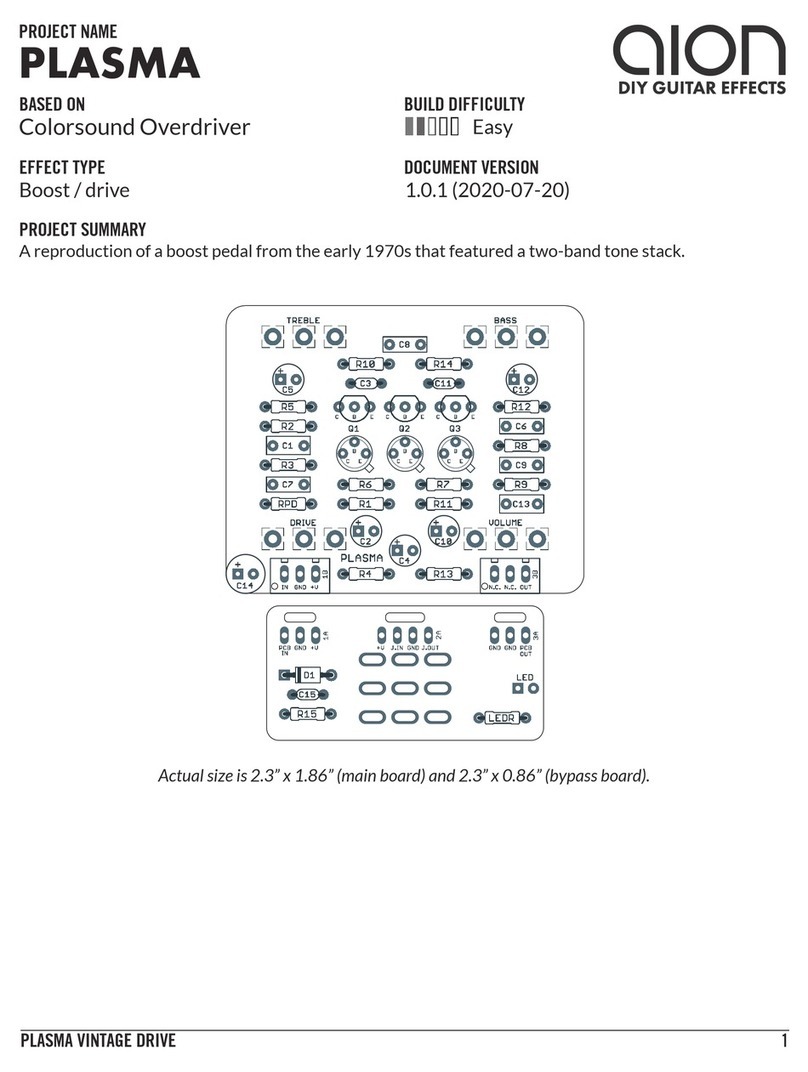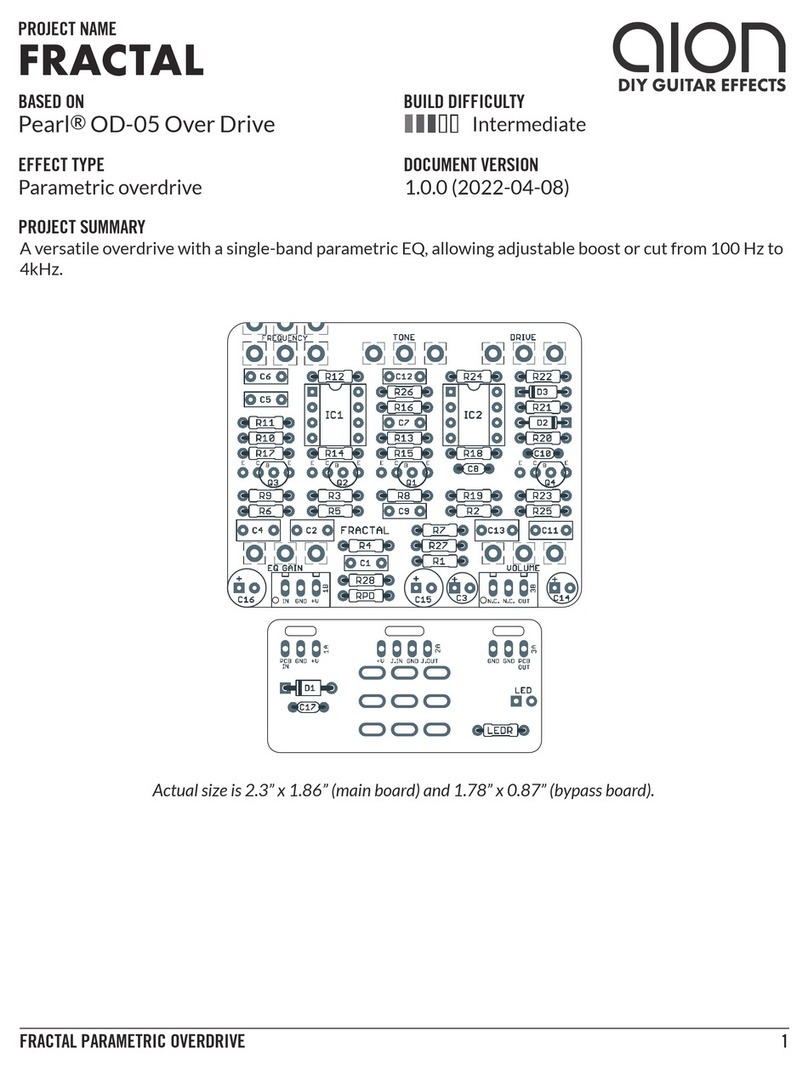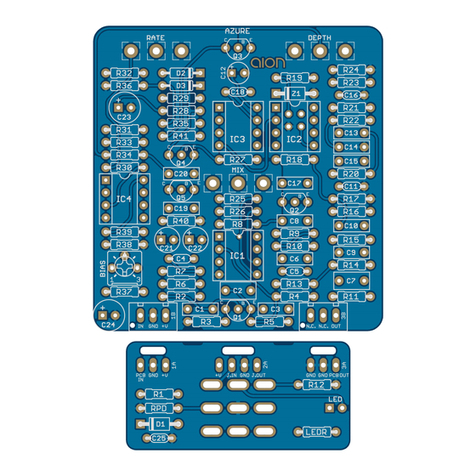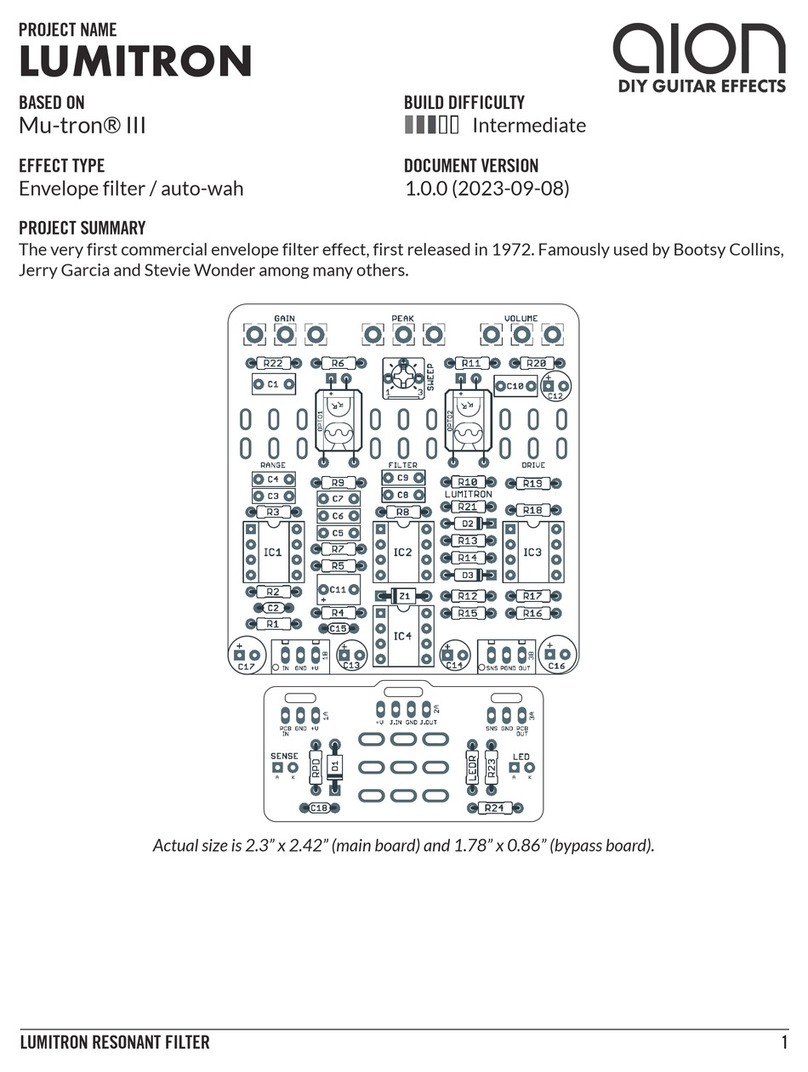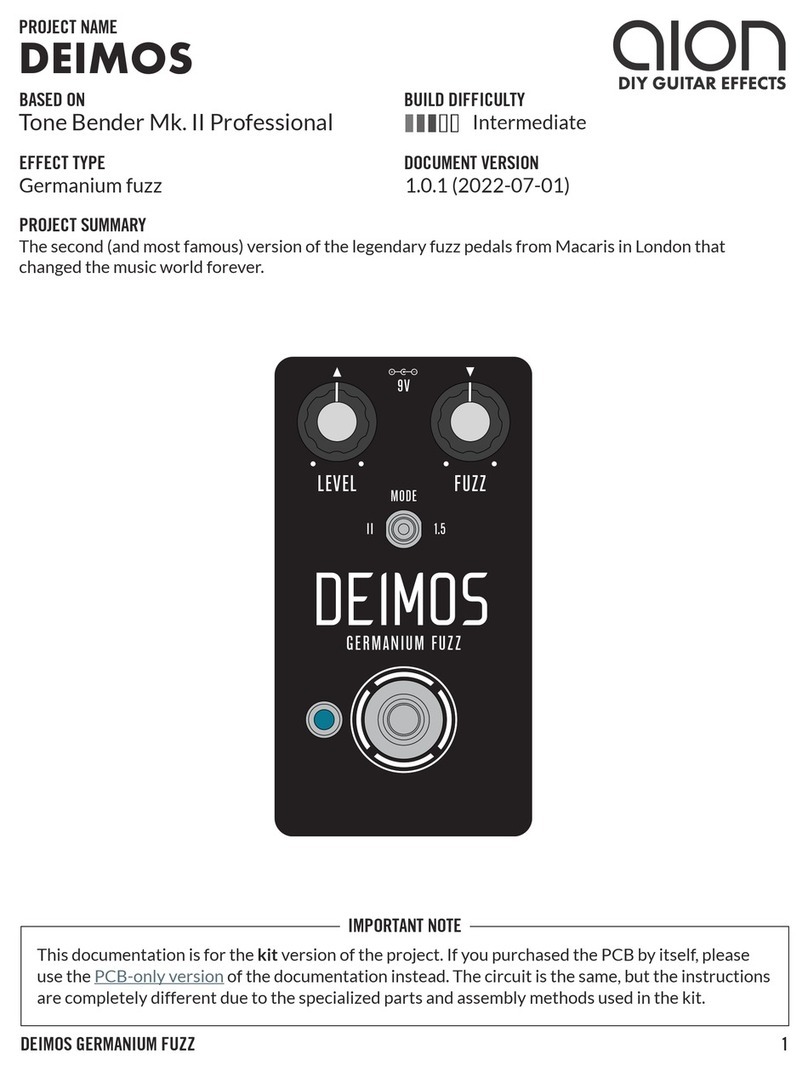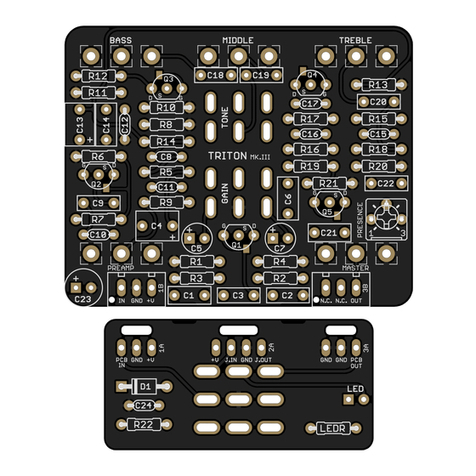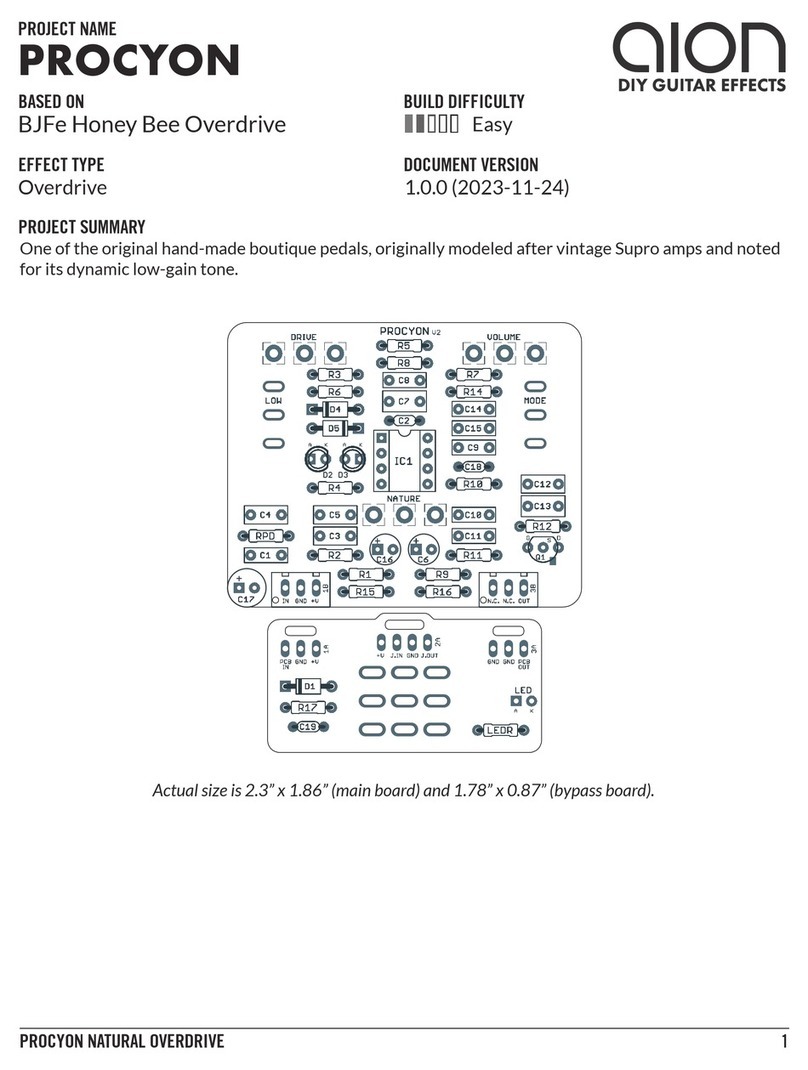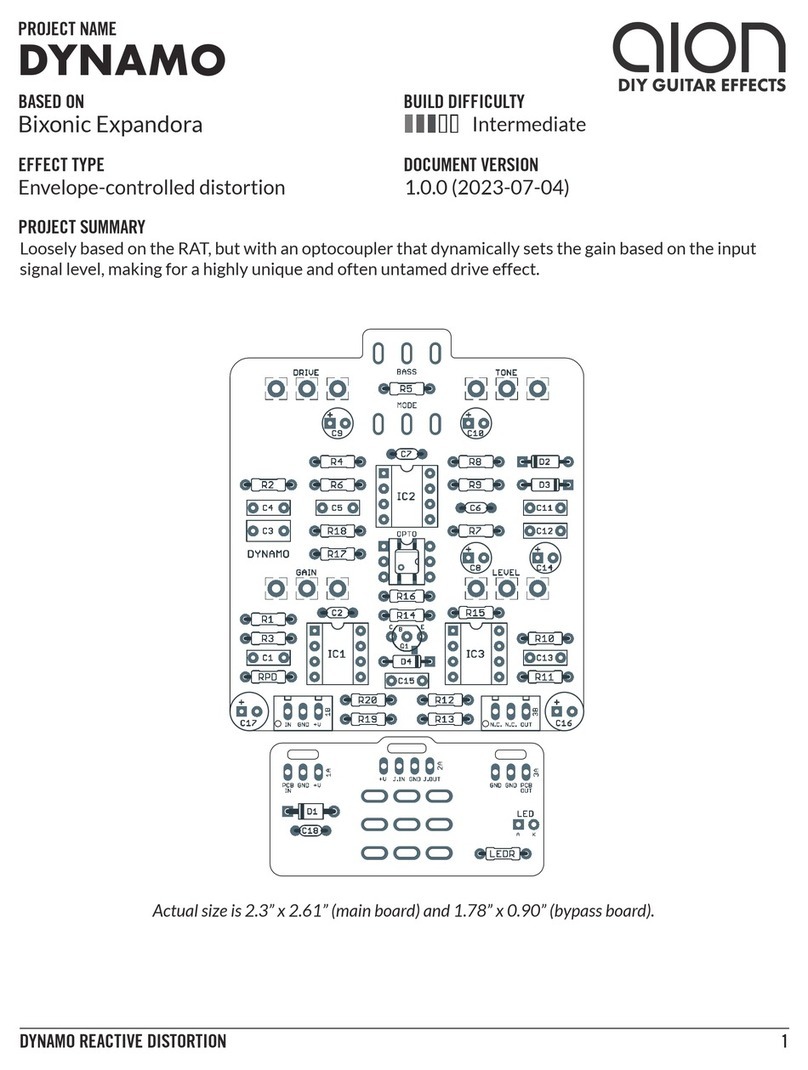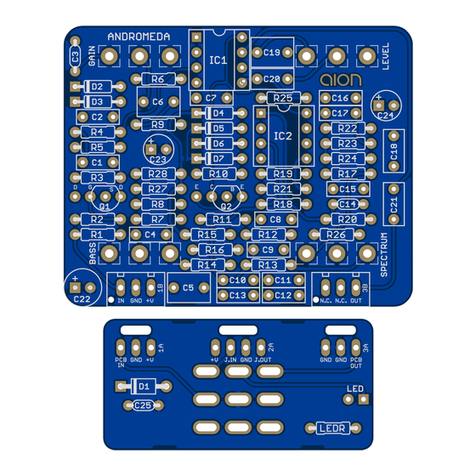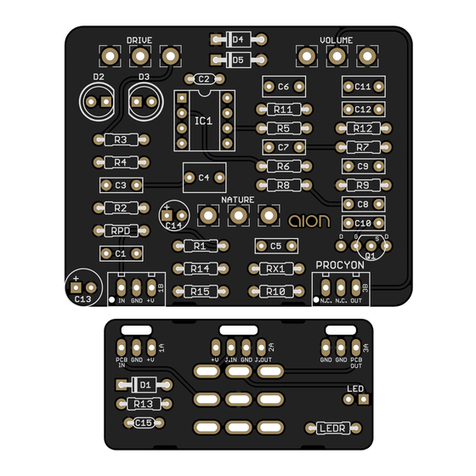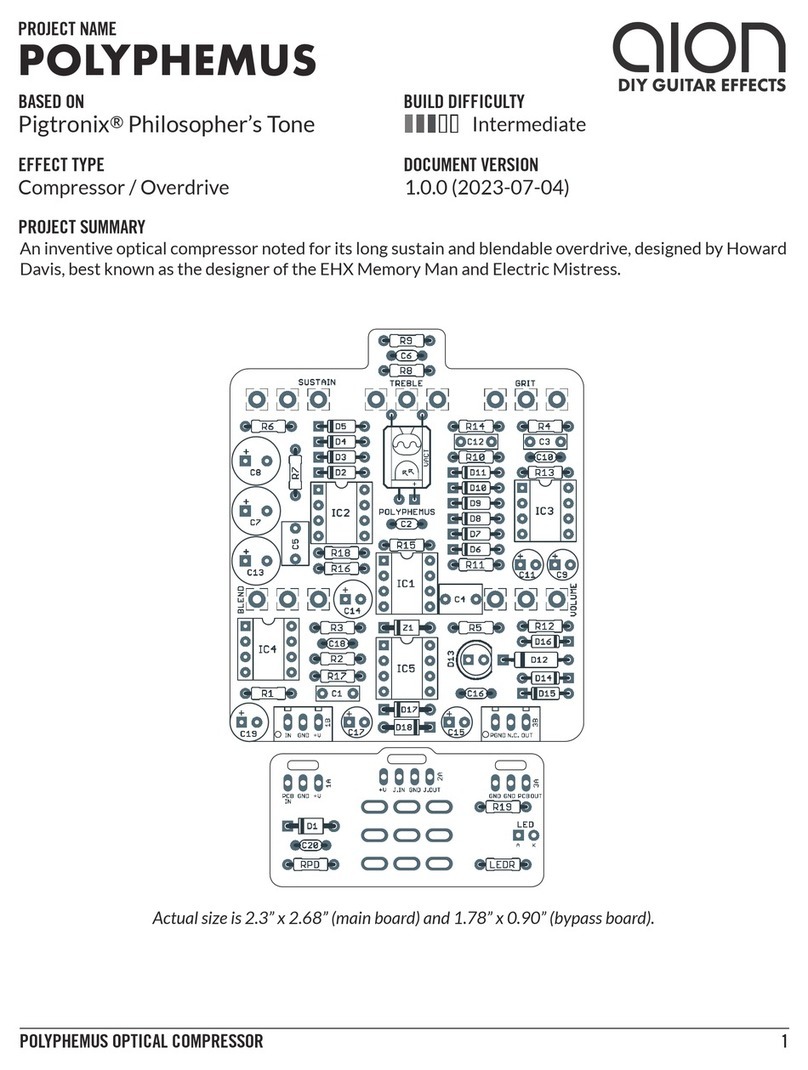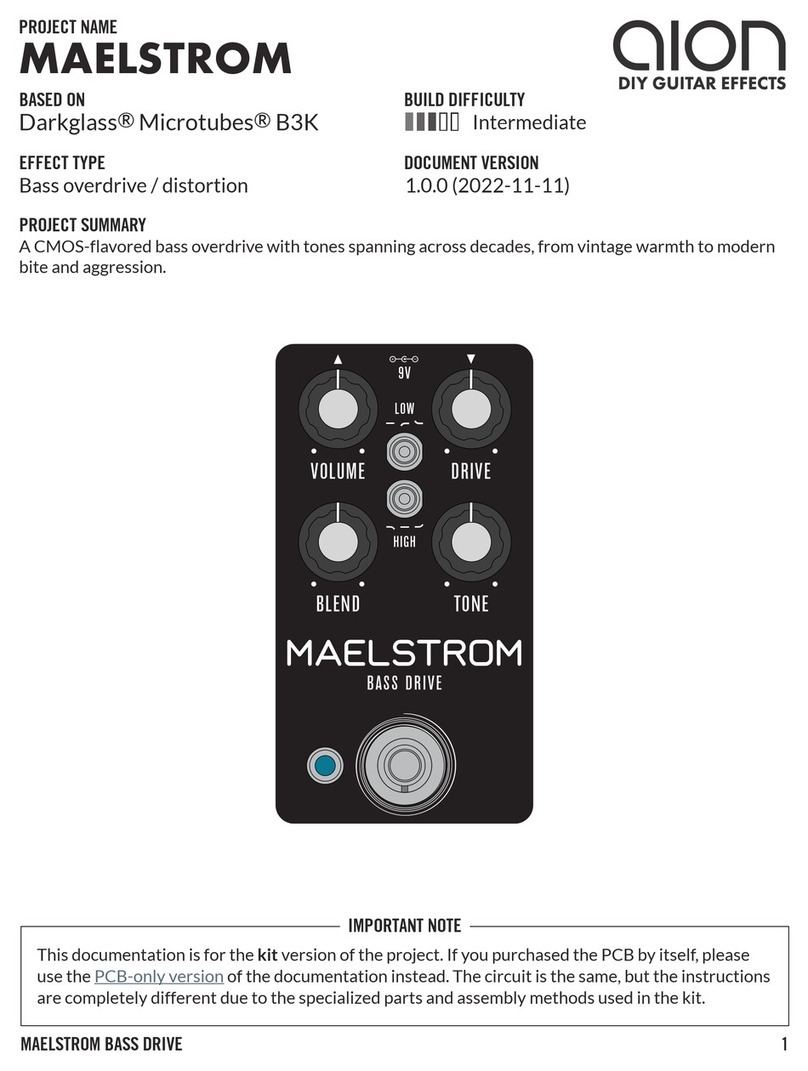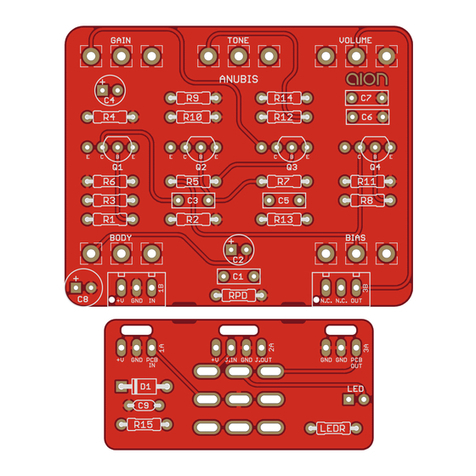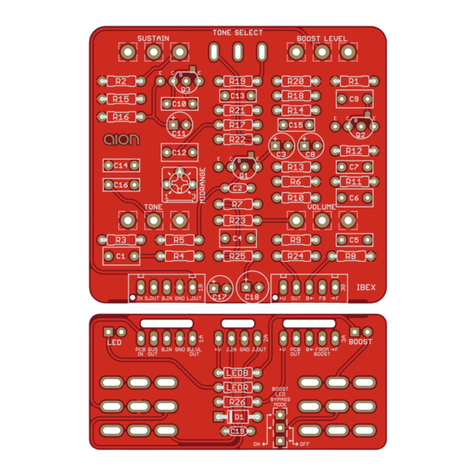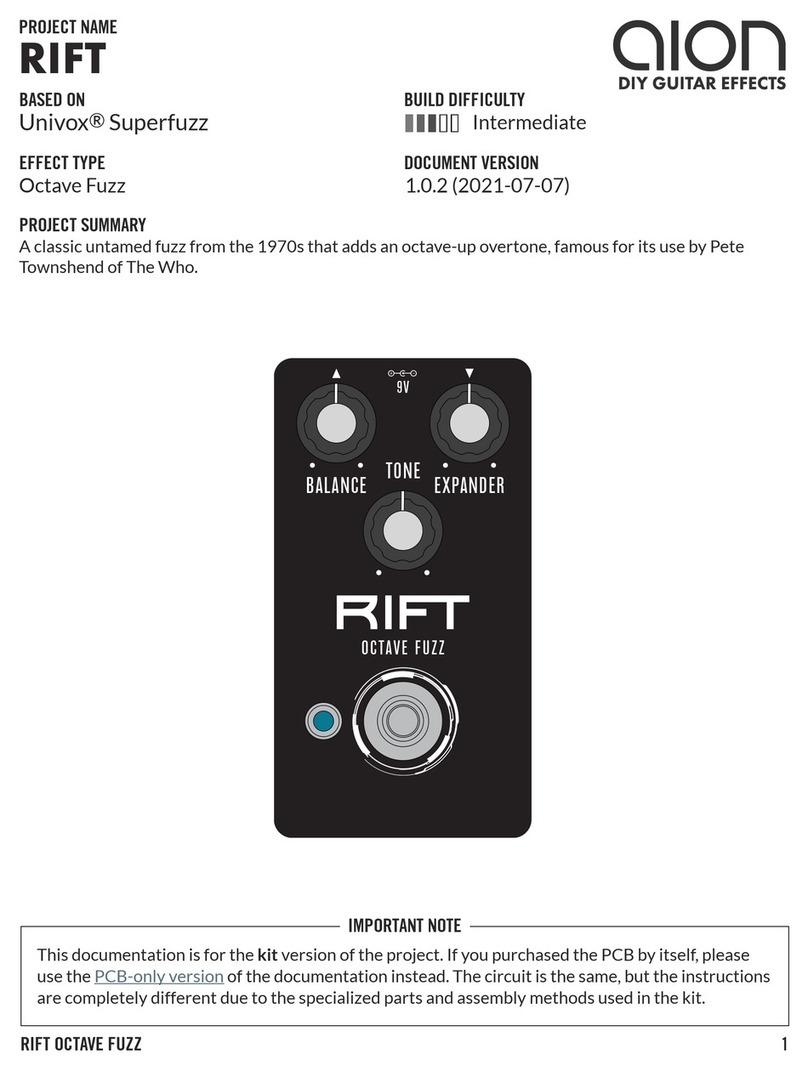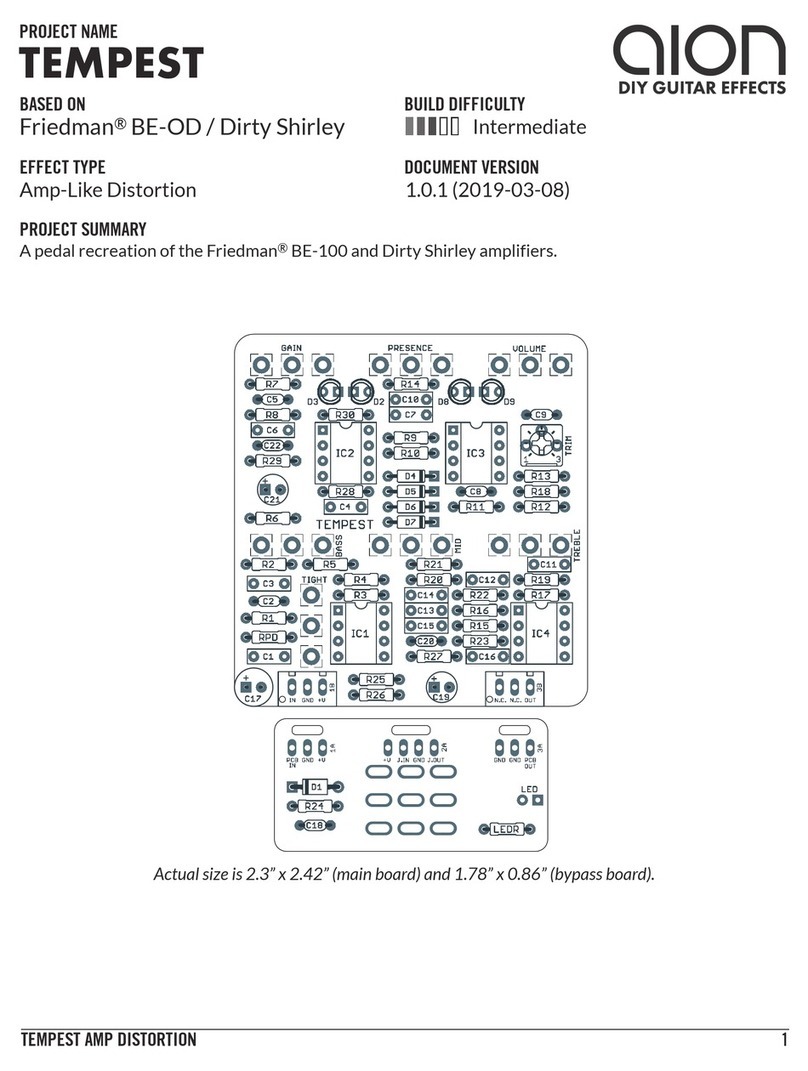
TITAN DYNAMIC DRIVE 5
BUILD NOTES
DIP switch settings
The OCD V1 had seven major versions, and many of the circuit changes across versions make a
noticeable difference to the tone. In this updated version of the Titan, we added DIP switches to make
several of these changes selectable so you can capture the main sonic characterics of any version.
SWITCH NAME “ON” DESCRIPTION “OFF” DESCRIPTION
+GE MOSFET clipping only (all versions but v1.4). Default position
for v1.7 specs.
Adds D2 and/or D3 in series with Q1 and Q2.
With one OFF and one ON, it’s equivalent to v1.4.
With both OFF, it’s equivalent to the V2 Custom
Shop Germanium.
HI CUT Adds C11 (10n) in parallel with C4 (v1.5), which cuts more
highs before the clipping stage.
1n hi-cut capacitor only (all versions but v1.5).
Default position for v1.7 specs.
+BASS Adds C12 (33n) in parallel with C3 (v1.1 - 1.3) for ~100n total,
which increases bass before the clipping stage.
68n capacitor value (v1.4 and later). Default
position for v1.7 specs.
+MIDS (left sw.) Adds C10 (47n) in parallel with C8 for ~100n total (v1.1 and
1.2) if the other +MIDS switch is ON.
If the other +MIDS switch is OFF, the total is 68n, which does
not correspond to any version but is a useful in-between value.
47n tone cap (v1.3 and later). Default position for
v1.7 specs.
+MIDS (right sw.) Bypasses C9 (47n), which keeps the tone capacitor value at
47n (v1.3 - 1.7). Default position for v1.7 specs.
Adds C9 (47n) in series with C8, which halves the
tone cap value to ~22n (v2.0).
Note: On the PCB, the switch positions are labeled according to what they do if the lever is moved toward the label, which is sometimes ON and
sometimes OFF. In the table above, the “ON” description refers to the lever being moved up, regardless of the placement of the label on the PCB. Most
DIP switches will have text on the switch itself indicating which position is ON.
Other version changes
There are a few other changes that are impractical or obscure that we have not included as switchable
options, but if you’re curious about the other differences then here are the full details for each.
VERSION DESCRIPTION
1.1 Drive 500kA; Tone 25kA; Volume 100kB; op-amp capacitor 100n (+BASS set to “ON”); tone capacitor 100n (both +MIDS
set to “ON”); no GE clipping (both +GE set to “ON”)
1.2 Same as v1.1, but Volume 500kB
1.3 Drive 1MA; Tone 10kB; Volume 500kB; op-amp capacitor 100n (+BASS set to “ON”); tone capacitor 47n (left +MIDS set
to “OFF”, right +MIDS set to “ON”); no GE clipping (both +GE set to “ON”); C2 and C5 are 330pF (these are 220pf in all
other versions)
1.4 Drive 1MA; Tone 10kB; Volume 500kB; op-amp capacitor 68n (+BASS set to “OFF”); tone capacitor 47n (left +MIDS set to
“OFF”, right +MIDS set to “ON”); asymmetric GE clipping (one +GE set to “OFF” and one set to “ON”)
1.5 Drive 1MA; Tone 10kB; Volume 100kA; op-amp capacitor 68n (+BASS set to “OFF”); tone capacitor 47n (left +MIDS set to
“OFF”, right +MIDS set to “ON”); add hi-cut capacitor (HI CUT set to “ON”); no GE clipping (both +GE set to “ON”)
1.6 Drive 1MA; Tone 10kB; Volume 100kB; op-amp capacitor 68n (+BASS set to “OFF”); tone capacitor 47n (left +MIDS set to
“OFF”, right +MIDS set to “ON”); remove hi-cut capacitor (HI CUT set to “OFF”); no GE clipping (both +GE set to “ON”)
1.7 Same as v1.6 (the version increment was due to upgraded filter capacitors). This is the version that is specified in the parts
list, and the version that was in production the longest.
